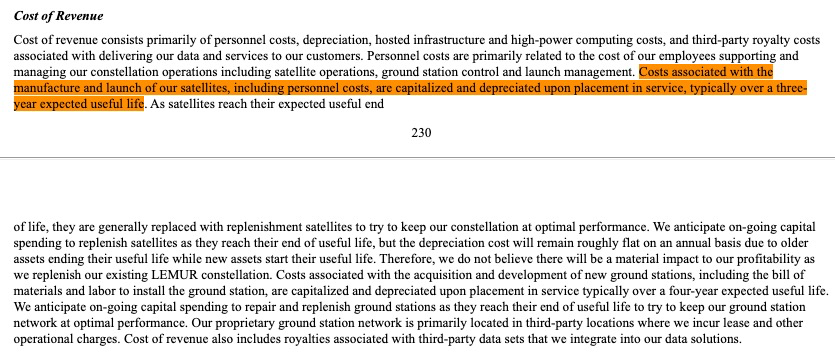
@MorganStanley recently issued a report that puts the value of #SpaceX at $100B. Let me start by saying that @MorganStanley disclaims that it may have "conflicts of interests" affecting its "objectivity". It is my opinion that it also affects @MorganStanley's common sense.
1/
1/

The @MorganStanley valuation of SpaceX is based on a series of very peculiar assumptions that are incredibly optimistic (tu put it nicely) from the perspectives of technology evolution, industrial costs and market uptake. Let's review them.
2/
2/
80% of #SpaceX value, is based on #starlink. @MorganStanley assumes that the Starlink system performance will improve by at least two orders of magnitude in 20 years, enabling it to attract 300M subscribers at 20$/month in 2040, and generate billions of free cash after 2030.
3/
3/
@MorganStanley believes that #starlink user terminals cost 1000$ in 2020 (in fact they cost 2400$) and can be driven down to 100$ in 2040.
@MorganStanley also believes that each satellite will be able to provide 240Gbps of bandwidth by 2040 (it is 17 to 23Gbps in 2021).
4/
@MorganStanley also believes that each satellite will be able to provide 240Gbps of bandwidth by 2040 (it is 17 to 23Gbps in 2021).
4/
@MorganStanley thinks that #starlink satellites cost 800k$ each in 2020, down to <50k$ in 2040 (with x10 bandwidth).
@MorganStanley assumes that #SpaceX will deploy 126000 starlink sats in 20 years, and they will cost only 1,2B$ to launch, i.e. 30$/kg at launch.
5/
@MorganStanley assumes that #SpaceX will deploy 126000 starlink sats in 20 years, and they will cost only 1,2B$ to launch, i.e. 30$/kg at launch.
5/

@MorganStanley thinks that #Starlink will be able to reach 100M households in 2030, and 300M in 2040 (i.e. about 10% of the world population!). @MorganStanley disregards the growth of data usage per household, and downplays the competition (in GEO and NGEO).
6/
6/
This is what it takes for Starlink to be profitable for @MorganStanley, miss just 1 of these assumptions and Starlink is basically worthless... still, the bank believes all these assumptions to be credible enough to support a "base scenario" to value #Starlink at $80B.
7/
7/
There is a single point of failure in this scenario: #Starship must be qualified in 2022 and drive down cost of launch enough for #Starlink to be profitable. @MorganStanley values #SpaceX launch business at $11B. This valuation is also supported by critical assumptions.
8/
8/
@MorganStanley assumes a x3 launch price/cost decrease by 2030 able to drive a x10 increase of annual mass launched by 2030; and a x7 launch cost decrease by 2040 able to justify a x100 growth of launch demand. This assumes a huge elasticity of demand.
9/
9/
@MorganStanley thinks that in 2030 #starship will launch more than 10000 tons (no typo: that is 10 thousand tons) in LEO. This tonnage is >10x above the most bullish forecasts produced by the usual sector experts (NSR, Euroconsult etc.).
10/
10/
@MorganStanley does not indicate at all what could be the demand drivers to support such an amazingly high launch rate and tonnage, but in order to justify the $11B valuation Starship would be launching 46000 tons in orbit in 2040.
11/
11/
This tonnage (at 500$/kg, for a market worth $24B in 2040) could be justified by, e.g., the full deployment of 5 complete Starlink constellations of 42000 satellites in just 1 year... Or the launch of 400 complete ISS, or a rotation of >300 astronauts to LEO every week...
12/
12/
To conclude, my impression is that the 100B$ valuation of #SpaceX by @MorganStanley is nothing but a (very crude) marketing effort that fails to meet any standard of objectivity or realism (esp. considering that in July 2020 @Morganstanley valued SpaceX at 50B$).
13/
13/
In fact, if you scale it all down by a factor 10 to stay within more realistic boundaries of space economics, SpaceX may be worth 10B$, which I think is probably a more sensible appreciation, and already quite an achievement for a "newcomer" in the space sector!
14/
14/
I know that there will be some (many?) that will disagree and say (e.g.) that the 100B$ value is justified by the potential of Starship, Mars colonisation and whatnot. It may well be, but this is not the rationale of the analysis proposed by @MorganStanley.
• • •
Missing some Tweet in this thread? You can try to
force a refresh














